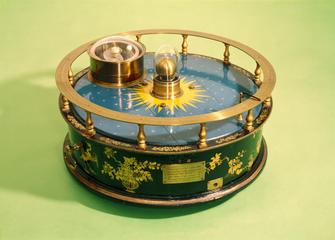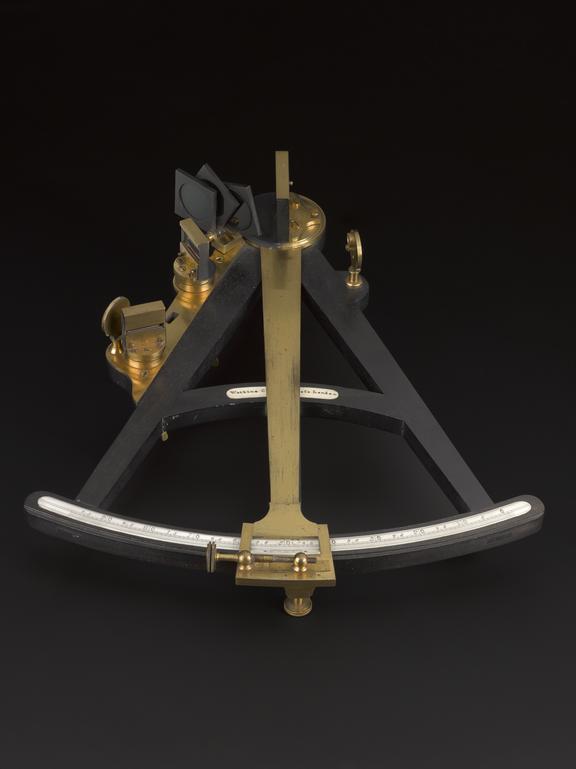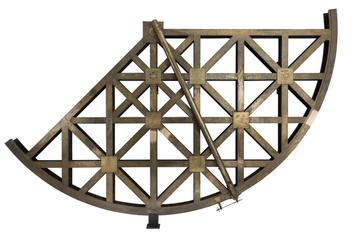
Ebony and brass octant.
- Made:
- 1777-1810 in Charing Cross










Octant signed ‘Watkins Charing Cross London’, made c. 1800. Ebony frame and limb, brass index arm and fittings, inlaid ivory plates on the crossbar and the back of the frame. The fouled anchor stamp was applied to instruments divided on a dividing engine; in this case either that of Jesse Ramsden (indicated by initials IR) or his apprentice Edward Pritchard (indicated by initials EP). The tangent screw is on the front of the index arm; the clamping screw is on the back. Three socket shades (two red, one green). Index-glass adjustment by screw; adjustment of the horizon glasses by screws, and by levers, wing nuts and milled clamping screws. The sight vane has two pinholes and a swivelling shade (red); the back sight vane has one pinhole. An ivory-capped pencil is fitted in the crossbar. No box.
Several members of the Watkins family were instrument makers working from the same address at 5 Charing Cross, London. This octant may have been made by Francis Watkins, or by his nephews Jeremiah and Walter who continued the business.
The stamp in the centre of the octant’s scale indicates it was divided on a dividing engine, a machine invented by leading instrument maker Jesse Ramsden in 1766 to partially automate the process of dividing small navigational instruments such as sextants and octants. In 1777 the government’s Board of Longitude, seeing the advantage of the machine in meeting the growing demand for navigational instruments, paid Ramsden to both publish the details of his engine, and to allow other makers to divide instruments upon it. By the early decades of the 19th century there were several dividing engines at work in London, and instruments divided upon them can be identified by the different marks they carry.
This instrument’s stamp is faint and indistinct. It has been previously identified as carrying the initials IR and thus being the mark relating to Jesse Ramsden’s engine. However, in several aspects it more closely resembles the mark of Ramsden’s apprentice Edward Pritchard, with the initials EP. Pritchard inherited one of his master’s engines.
For more information on these marks see:
W. F. J. Mörzer Bruyns, Sextants at Greenwich, Oxford: Oxford University Press, 2009, pp. 44-3.
A. N. Stimson, ‘Some Board of Longitude Instruments in the Nineteenth Century’ in P. R. de Clercq (ed.), Nineteenth-Century Scientific Instruments and their Makers: Papers presented at the Fourth Scientific Instrument Symposium, Amsterdam 23-26 October 1984, Amsterdam: Rodpi; Leiden: Museum Boerhaave, 1985, pp. 93-115.




